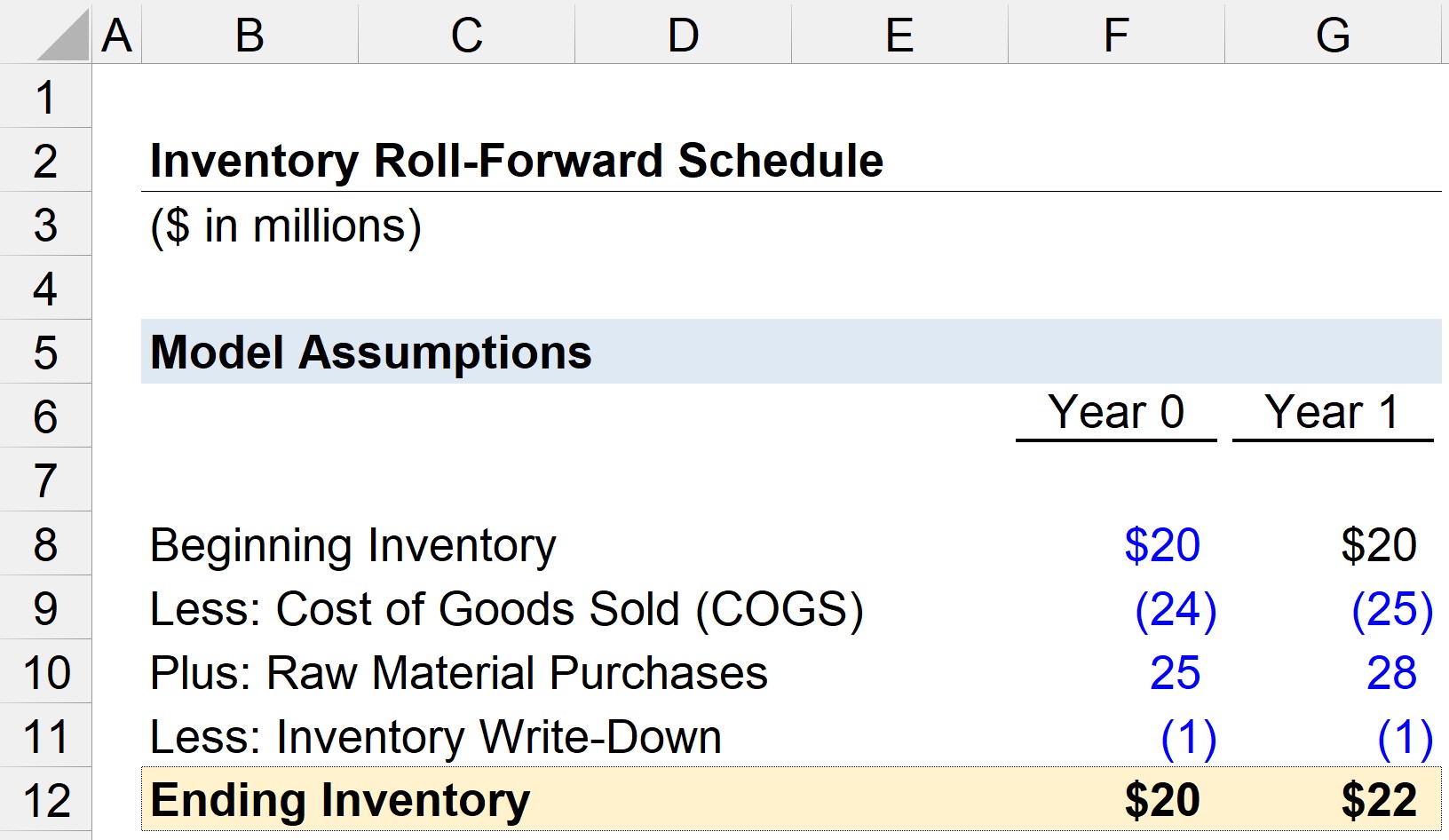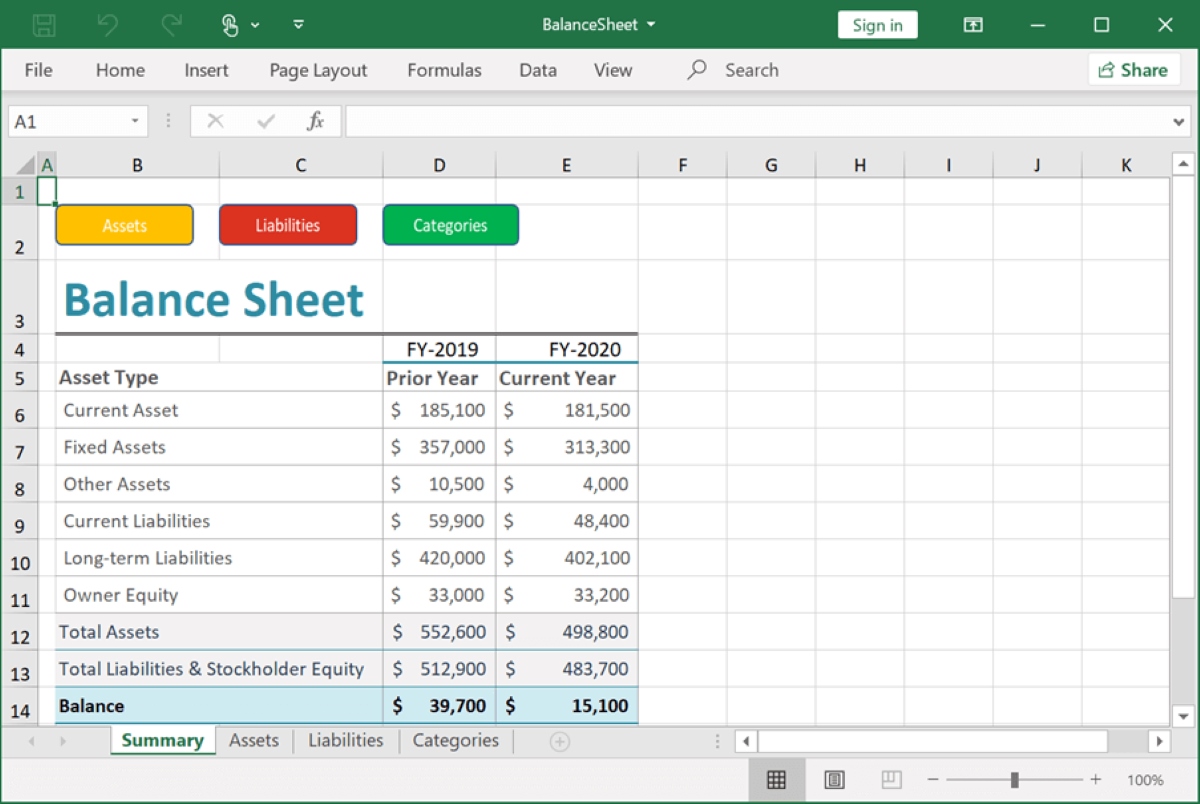Home>Finance>How Hedging Foreign Exchange Affects The Balance Sheet


Finance
How Hedging Foreign Exchange Affects The Balance Sheet
Published: January 15, 2024
Discover how hedging foreign exchange impacts the balance sheet in finance. Gain insights on mitigating currency risks and optimizing financial outcomes.
(Many of the links in this article redirect to a specific reviewed product. Your purchase of these products through affiliate links helps to generate commission for LiveWell, at no extra cost. Learn more)
Table of Contents
- Introduction
- Definition of Hedging Foreign Exchange
- The Importance of Balance Sheet
- Understanding the Impact of Hedging on the Balance Sheet
- Accounted Changes on Balance Sheet due to Hedging
- Analysis of Financial Ratios and Performance Indicators
- Case Studies: Companies and their Hedging Strategies
- Advantages and Disadvantages of Hedging Foreign Exchange on Balance Sheet
- Conclusion
Introduction
In the world of finance, managing foreign exchange risk is a crucial part of ensuring the stability and profitability of a company. Fluctuations in currency exchange rates can have a significant impact on a company’s balance sheet, affecting its financial standing and overall performance. This is where the concept of hedging foreign exchange comes into play. By strategically employing hedging techniques, companies aim to mitigate the potential risks caused by these fluctuations and safeguard their balance sheet.
Hedging foreign exchange involves entering into financial contracts or using other financial instruments to offset the risk of adverse movements in currency exchange rates. It allows companies to reduce their exposure to foreign exchange rate fluctuations, ensuring that their financial statements accurately reflect the underlying economic activities. In other words, by hedging foreign exchange, companies can protect themselves from potential losses associated with currency fluctuations and maintain stability in their financial position.
The balance sheet is a vital financial statement that provides a snapshot of a company’s financial health at a specific point in time. It reflects the company’s assets, liabilities, and shareholders’ equity, offering valuable insights into its overall financial standing. Understanding the impact of hedging foreign exchange on the balance sheet is crucial for financial decision-makers, as it helps in assessing the company’s risk exposure, liquidity position, and overall financial performance.
Throughout this article, we will delve deeper into the relationship between hedging foreign exchange and the balance sheet. We will explore how hedging techniques impact the various components of the balance sheet, including assets, liabilities, and shareholder’s equity. We will also analyze the effects of hedging on key financial ratios and performance indicators, providing a comprehensive understanding of the implications of hedging foreign exchange on a company’s financial position.
Additionally, we will examine real-world case studies to showcase how companies utilize hedging strategies to manage foreign exchange risk and protect their balance sheet. By analyzing both the advantages and disadvantages of hedging foreign exchange, we will gain insights into the potential benefits and considerations that companies need to take into account when implementing hedging strategies.
Overall, this article aims to provide a comprehensive overview of how hedging foreign exchange affects the balance sheet. By understanding the impact of hedging on the various components of the balance sheet and analyzing associated financial ratios, readers will gain valuable insights on effectively managing foreign exchange risk and ensuring financial stability.
Definition of Hedging Foreign Exchange
Hedging foreign exchange refers to the practice of mitigating the risk associated with fluctuations in currency exchange rates. It is a financial strategy used by companies to protect themselves from potential losses caused by adverse movements in foreign currency exchange rates. By entering into financial contracts or using other financial instruments, companies aim to offset the impact of currency fluctuations on their financial positions.
At its core, hedging foreign exchange involves taking opposite positions in the currency market to neutralize the potential risks. Through hedging, companies aim to minimize the uncertainty and volatility caused by fluctuations in foreign exchange rates, ensuring that their financial statements accurately reflect the underlying economic activities.
There are various hedging techniques that companies can utilize to manage foreign exchange risk. One common technique is the use of forward contracts, which allow companies to lock in a specific exchange rate for future transactions. By entering into an agreement to buy or sell a specific currency at a predetermined rate on a future date, companies can protect themselves from potential losses caused by unfavorable currency movements.
Another commonly used hedging instrument is options contracts. Options provide companies with the right, but not the obligation, to buy or sell currencies at a certain exchange rate within a specified period. This flexibility allows companies to participate in favorable currency movements while offering downside protection against adverse movements.
Furthermore, companies may also employ currency swaps as a hedging strategy. A currency swap involves the exchange of principal and interest payments in different currencies, helping companies to manage their currency exposure effectively. By swapping cash flows, companies can reduce the risk associated with currency fluctuations and align their cash flows with their operational needs.
It is important to note that while hedging foreign exchange helps mitigate risk, it also comes with associated costs. Companies may incur expenses related to executing hedging contracts, such as transaction fees or premiums paid for options contracts. Moreover, there is always the potential risk of the hedging strategy not being entirely effective, as unexpected market movements can impact currency values differently than anticipated.
Overall, hedging foreign exchange is a proactive financial strategy employed by companies to reduce their exposure to currency fluctuations. By utilizing various financial instruments and contracts, companies can protect their financial positions and ensure stability in their balance sheets despite the uncertainties in the foreign exchange market.
The Importance of Balance Sheet
The balance sheet is a fundamental financial statement that provides a snapshot of a company’s financial position at a specific point in time. It is a crucial tool for both internal and external stakeholders, offering insights into a company’s assets, liabilities, and shareholders’ equity.
One of the key reasons why the balance sheet holds immense importance is its ability to provide an overview of a company’s financial health and stability. It showcases the company’s total assets, which include cash, investments, accounts receivable, inventory, and property. By understanding the value of these assets, stakeholders can assess the company’s ability to cover its liabilities and meet its financial obligations.
Liabilities, which are the debts and obligations of the company, are also showcased on the balance sheet. This includes accounts payable, loans, and other financial obligations. By analyzing the liabilities, stakeholders can evaluate the company’s risk exposure and its ability to manage its financial obligations in a timely manner.
The balance sheet also presents the shareholders’ equity, which is the residual interest in the assets of the company after deducting liabilities. This equity represents the ownership interest that shareholders have in the company and indicates the financial worth of the company to its owners.
For investors and potential investors, the balance sheet plays a critical role in assessing the financial strength and stability of a company. It helps in determining whether a company is capable of generating profits, managing its debts, and providing an adequate return on investment. By analyzing the balance sheet, investors can make informed decisions regarding their investments and evaluate the long-term viability of a company.
The balance sheet is also important for creditors and lenders as it provides insights into a company’s ability to repay its debts. By assessing the company’s assets and liabilities, creditors can evaluate the creditworthiness of the company and make decisions regarding lending or extending credit.
Furthermore, the balance sheet serves as a benchmark for comparing a company’s financial performance over time. By analyzing the changes in the assets, liabilities, and equity from one period to another, stakeholders can assess the company’s growth, financial stability, and efficiency in managing its resources.
Overall, the balance sheet is a critical financial statement that provides a holistic view of a company’s financial position. It assists stakeholders in evaluating the company’s financial health, making informed investment decisions, assessing creditworthiness, and monitoring the company’s performance over time. The balance sheet’s significance lies in its ability to provide a comprehensive picture of a company’s financial standing and contribute to transparent and informed decision-making processes.
Understanding the Impact of Hedging on the Balance Sheet
Hedging foreign exchange can have a significant impact on a company’s balance sheet. By employing hedging techniques, companies aim to manage the risks associated with currency fluctuations and ensure the accuracy and stability of their financial statements.
One of the major impacts of hedging on the balance sheet is the stabilization of the company’s assets. Fluctuations in currency exchange rates can affect the value of a company’s foreign assets. Through hedging, companies can protect the value of these assets by offsetting any potential losses caused by adverse currency movements. This helps in maintaining the value and stability of the company’s asset base as reported on the balance sheet.
Hedging also has an impact on a company’s liabilities. Companies that have foreign currency denominated debt can be exposed to risks when currency exchange rates fluctuate. By hedging their foreign exchange obligations, companies can protect themselves from potential losses arising from unfavorable currency movements. This ensures that the liabilities reported on the balance sheet remain stable and accurately reflect the company’s obligations.
Another impact of hedging on the balance sheet is on shareholders’ equity. Hedging allows companies to mitigate the impact of foreign currency fluctuations on their equity base. By reducing the volatility and uncertainty caused by currency movements, hedging helps in stabilizing the company’s equity position. This ensures that the shareholders’ equity reported on the balance sheet accurately reflects the company’s true financial worth and provides a more consistent measure of value.
In addition to these direct impacts on assets, liabilities, and shareholders’ equity, hedging can also affect the balance sheet indirectly through its impact on other financial measures. For instance, hedging can influence the company’s liquidity position. By managing foreign exchange risk, companies can mitigate the potential cash flow challenges caused by currency fluctuations. This ensures that the company has the necessary liquidity to meet its financial obligations, enhancing its financial stability as reported on the balance sheet.
Hedging also has implications for financial ratios and performance indicators. By stabilizing the value of assets, liabilities, and equity, hedging helps in maintaining the integrity of financial ratios such as debt-to-equity ratio, current ratio, and return on equity. These ratios are important indicators of a company’s financial health and performance and are closely scrutinized by investors, lenders, and other stakeholders.
Overall, hedging foreign exchange has a significant impact on the balance sheet. It helps in stabilizing the value of assets, liabilities, and equity, ensuring the accuracy and stability of the company’s financial statements. Additionally, hedging contributes to improved liquidity, enhances financial ratios, and provides a more consistent and reliable measure of a company’s financial position. By managing foreign exchange risk effectively, companies can safeguard their balance sheets and position themselves for long-term financial success.
Accounted Changes on Balance Sheet due to Hedging
Hedging foreign exchange can result in several accounted changes on the balance sheet. These changes primarily revolve around the assets, liabilities, and shareholders’ equity of a company and reflect the impact of hedging on these components.
One of the most notable changes on the balance sheet due to hedging is the adjustment to the value of foreign currency denominated assets. When a company enters into hedging contracts, it aims to protect the value of its foreign assets from potential losses caused by unfavorable currency movements. As a result, the value of these assets may be adjusted to reflect the hedged exchange rate on the balance sheet. This ensures that the balance sheet accurately reflects the company’s hedged position and the true economic value of the assets in the reporting currency.
Similarly, hedging impacts the liabilities reported on the balance sheet. Companies that have foreign currency denominated debt may need to adjust the value of these liabilities when hedging their foreign exchange risk. By hedging their obligations, companies aim to protect themselves from potential losses arising from unfavorable currency movements. This adjustment ensures that the balance sheet accurately reflects the company’s hedged position and its true liability in the reporting currency.
Furthermore, hedging can have an impact on shareholders’ equity. Shareholders’ equity represents the ownership interest in the company and includes retained earnings and contributed capital. When companies hedge foreign exchange risk, the impact of currency fluctuations on shareholders’ equity is mitigated. As a result, the reported value of shareholders’ equity may remain more stable and accurately reflect the company’s true financial worth.
Additionally, the income statement can be affected by the changes on the balance sheet due to hedging. Hedging activities can result in gains or losses being recognized in the income statement. These gains or losses are typically associated with the settlement of hedging contracts or changes in the fair value of the hedged item. The income statement reflects these gains or losses, thereby impacting the net income reported for the period.
It is important to note that while hedging can result in accounted changes on the balance sheet, it is essential to carefully consider and adhere to accounting standards and principles when reporting these changes. Companies need to follow the appropriate accounting treatments for hedging activities, ensuring that the changes on the balance sheet are accurately reflected and reported.
In summary, hedging foreign exchange can lead to accounted changes on the balance sheet. These changes include adjustments to the value of foreign currency denominated assets and liabilities, the impact on shareholders’ equity, and the recognition of gains or losses in the income statement. By accurately accounting for these changes, companies ensure that their balance sheets properly reflect their hedged positions and provide a clear picture of their financial position and performance.
Analysis of Financial Ratios and Performance Indicators
When hedging foreign exchange, it is essential to analyze the impact on various financial ratios and performance indicators. These metrics provide valuable insights into a company’s financial health, profitability, and efficiency. The analysis of these ratios helps assess the effectiveness of the hedging strategy and its implications for the company’s overall performance.
One crucial financial ratio to consider is the debt-to-equity ratio. This ratio measures the proportion of a company’s debt to its shareholders’ equity and indicates its leverage and financial risk. Hedging foreign exchange can impact this ratio by stabilizing the value of both assets and liabilities. A well-implemented hedging strategy can help maintain the debt-to-equity ratio at a desirable level, ensuring financial stability and demonstrating the company’s ability to meet its financial obligations.
The current ratio is another significant ratio affected by hedging. It measures a company’s ability to cover its short-term liabilities with its short-term assets. Hedging can impact this ratio by stabilizing the value of assets and ensuring sufficient liquidity to meet current obligations. A healthy current ratio indicates that the company can easily meet its short-term financial commitments and manage its day-to-day operations effectively.
Moreover, hedging can influence profitability ratios, such as return on equity (ROE) and return on assets (ROA). By stabilizing the value of assets and equity, hedging can help maintain a consistent and accurate measure of profitability. A higher ROE and ROA demonstrate efficient use of resources and the potential for generating strong returns for shareholders.
Hedging can impact cash flow metrics as well. One important indicator to consider is the operating cash flow ratio. This ratio measures a company’s ability to generate cash flow from its operations to cover its operating expenses and investments. A well-implemented hedging strategy can stabilize cash flows and ensure a steady stream of operating cash flow, enhancing the company’s ability to fund its activities and pursue growth opportunities.
Additionally, it is crucial to evaluate return on investment (ROI) and economic value-added (EVA) when analyzing the impact of hedging on financial performance. Both measures assess the profitability and value added by a company’s investments and activities. Hedging can help provide a more stable and reliable measure of ROI and EVA by mitigating the uncertainties caused by currency fluctuations. This enables a more accurate evaluation of the company’s overall performance and the effectiveness of its hedging strategy.
It is important to note that while analyzing financial ratios and performance indicators, one should consider the specific industry and market dynamics. Different industries may have unique considerations and benchmarks for evaluating financial health and performance.
Overall, analyzing financial ratios and performance indicators is crucial when assessing the impact of hedging foreign exchange. It helps in understanding the effectiveness of the hedging strategy, its implications for financial health and stability, and its contribution to profitability and value creation. By considering these metrics, companies can make informed decisions regarding their hedging strategies and ensure long-term financial success.
Case Studies: Companies and their Hedging Strategies
Examining real-world case studies of companies and their hedging strategies provides valuable insights into the practical implementation and effectiveness of hedging foreign exchange. Let’s explore a few examples:
Case Study 1: Company A – Manufacturing Industry
Company A is a global manufacturing company that sources raw materials from overseas suppliers. To mitigate the risk of currency fluctuations, Company A implements a forward contract hedging strategy. By entering into forward contracts to purchase the required foreign currency at a fixed exchange rate, Company A can lock in the cost of raw materials and protect itself from potential losses caused by unfavorable currency movements. This hedging strategy helps stabilize its production costs and ensures a consistent supply chain, ultimately contributing to its financial stability and profitability.
Case Study 2: Company B – Services Industry
Company B is a consulting firm that operates internationally and earns a significant portion of its revenue in foreign currencies. To manage the fluctuations in exchange rates, Company B implements a natural hedging strategy. By maintaining a diverse client base with operations in various countries, Company B offsets the impact of currency fluctuations on its revenue. For example, if the value of one currency decreases, the revenue generated from another currency may increase, providing a natural balance. This hedging approach reduces the exposure to foreign exchange risk and allows Company B to maintain a stable financial position.
Case Study 3: Company C – Retail Industry
Company C is a multinational retail company that imports goods from different countries. To manage the risk associated with fluctuating exchange rates, Company C employs a currency option hedging strategy. By purchasing options contracts, it has the right, but not the obligation, to buy or sell currencies at a predetermined exchange rate. This strategy allows Company C to participate in favorable currency movements, while providing protection against adverse movements. By utilizing currency options, Company C hedges its exchange rate risk and ensures price stability for its imported goods, minimizing the impact on its profit margins.
Case Study 4: Company D – Financial Services Industry
Company D is a multinational financial services company that engages in various foreign currency transactions. To manage its foreign exchange risk, Company D employs a currency swap hedging strategy. By exchanging cash flows in different currencies, Company D reduces its exposure to currency fluctuations and aligns its cash inflows and outflows with its operational needs. This hedging technique enables Company D to better manage its foreign exchange risk, maintain stable cash flows, and effectively serve its clients globally.
These case studies exemplify different hedging strategies employed by companies across various industries. Each company assesses its unique risks and implements a hedging strategy best suited to its specific circumstances. By understanding these approaches and their outcomes, companies can gain insights into effective hedging practices within their industry and adapt them to their own risk management strategies.
It is crucial for companies to continuously monitor market conditions, reassess their hedging strategies, and adapt them accordingly to ensure optimal risk management.
Advantages and Disadvantages of Hedging Foreign Exchange on Balance Sheet
Hedging foreign exchange can offer several advantages for companies, particularly when it comes to the stability and accuracy of their balance sheets. However, it is also important to consider the potential disadvantages associated with hedging. Let’s explore the advantages and disadvantages in more detail:
Advantages:
- Reduces Foreign Exchange Risk: Hedging allows companies to mitigate the impact of currency fluctuations on their balance sheets. By hedging their foreign exchange exposure, companies can protect the value of assets, liabilities, and equity from potential losses caused by unfavorable currency movements.
- Enhances Financial Stability: Hedging aids in stabilizing the financial position of a company. By reducing volatility and uncertainty, hedging helps maintain a consistent and accurate representation of a company’s financial health on the balance sheet, contributing to overall financial stability.
- Improves Decision-Making: With hedging, companies can make more informed and confident financial decisions. By managing foreign exchange risk, companies can better evaluate investment opportunities, assess pricing strategies, and plan for future cash flows, enhancing their ability to make strategic decisions.
- Protects Profit Margins: Hedging can safeguard a company’s profit margins by protecting against unfavorable currency movements. By locking in exchange rates or utilizing hedging instruments, companies can mitigate the impact of currency fluctuations on their costs or revenue, ensuring more stable and predictable profit margins.
Disadvantages:
- Costs and Complexities: Hedging involves costs such as transaction fees, premiums for option contracts, or potential opportunity costs. Additionally, implementing and monitoring hedging strategies can be complex, requiring specialized expertise and resources to ensure effectiveness.
- No Guarantee of Perfect Hedging: Hedging cannot provide complete protection against all risks and is not foolproof. Unforeseen market events or unexpected currency movements can still impact the effectiveness of hedging strategies, potentially leading to losses or ineffectiveness of the hedging program.
- Potential Missed Opportunities: Hedging may limit the potential for gaining from favorable currency movements. In some cases, hedging may result in sacrificing potential profits if the currency moves in a more beneficial direction than expected. Companies need to weigh the benefits of risk mitigation against potential missed opportunities arising from hedging.
- Compliance and Accounting Considerations: Hedging activities require strict adherence to accounting standards and regulatory compliance. Failure to adhere to these guidelines can lead to complexities in reporting and potential inaccuracies on the balance sheet.
It is important for companies to carefully weigh the advantages and disadvantages of hedging foreign exchange on the balance sheet. They should consider their risk appetite, market conditions, and the potential impact on their financial position and performance. This evaluation should be an ongoing process, with periodic reassessment of hedging strategies to ensure alignment with company goals and market dynamics.
Ultimately, the use of hedging strategies should be tailored to each company’s specific circumstances and risk management objectives, taking into account the potential benefits and drawbacks of such practices.
Conclusion
Hedging foreign exchange is a crucial aspect of financial management, and its impact on the balance sheet cannot be overlooked. Throughout this article, we have explored the definition of hedging foreign exchange and its significance in managing currency risk. We have discussed the importance of the balance sheet as a key financial statement for assessing a company’s financial health.
The analysis of how hedging affects the balance sheet has provided insights into the adjustments made to assets, liabilities, and shareholders’ equity. We have also examined how hedging influences financial ratios and performance indicators, contributing to a more accurate representation of a company’s financial position and performance.
Furthermore, the examination of case studies has showcased the diverse hedging strategies implemented by companies across various industries. These examples have demonstrated the practical applications of hedging and highlighted the importance of aligning hedging strategies with specific business and industry needs.
While hedging foreign exchange offers advantages such as risk reduction, financial stability, and improved decision-making, there are also potential disadvantages to consider, including costs, complexities, missed opportunities, and compliance considerations.
In conclusion, hedging foreign exchange plays a pivotal role in safeguarding a company’s balance sheet and managing currency risk. By implementing effective hedging strategies, companies can protect their assets, stabilize their liabilities, and ensure more accurate financial reporting. However, it is crucial for companies to carefully consider the pros and cons of hedging, assess their specific risk exposure, and continuously monitor and adjust their strategies to align with changing market dynamics.
By understanding the impact of hedging foreign exchange on the balance sheet and its implications for financial performance, companies can navigate currency fluctuations more effectively and position themselves for long-term financial success.














